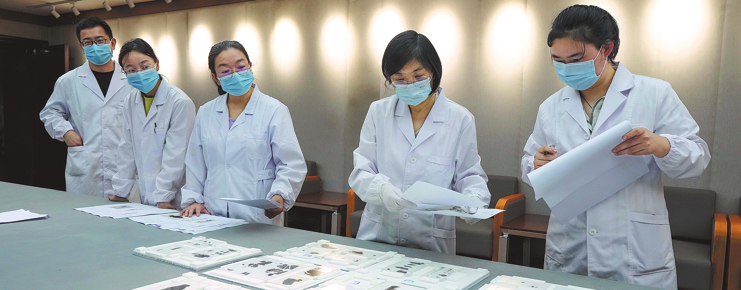

After the manuscripts arrived at the Hunan Museum in September, they underwent a 14-day environmental adaptation observation period and are now preserved in a stable environment with precise temperature and humidity controls, according to the museum.
A holographic data collection project was established to create digital imaging of all texts on the manuscripts. After a high-resolution scan, more than 40 ink-written characters, invisible to the naked eye, were found on one large piece of the manuscript remnants that had not been fully separated from the others.
"We believe the newly found words belong to Wuxing Ling (Volume II)," says Yu Yanjiao, a researcher at the Hunan Museum. Some characters, such as those referring to vessels and food containers, are identical to the ones in the known Wuxing Ling text, she says.